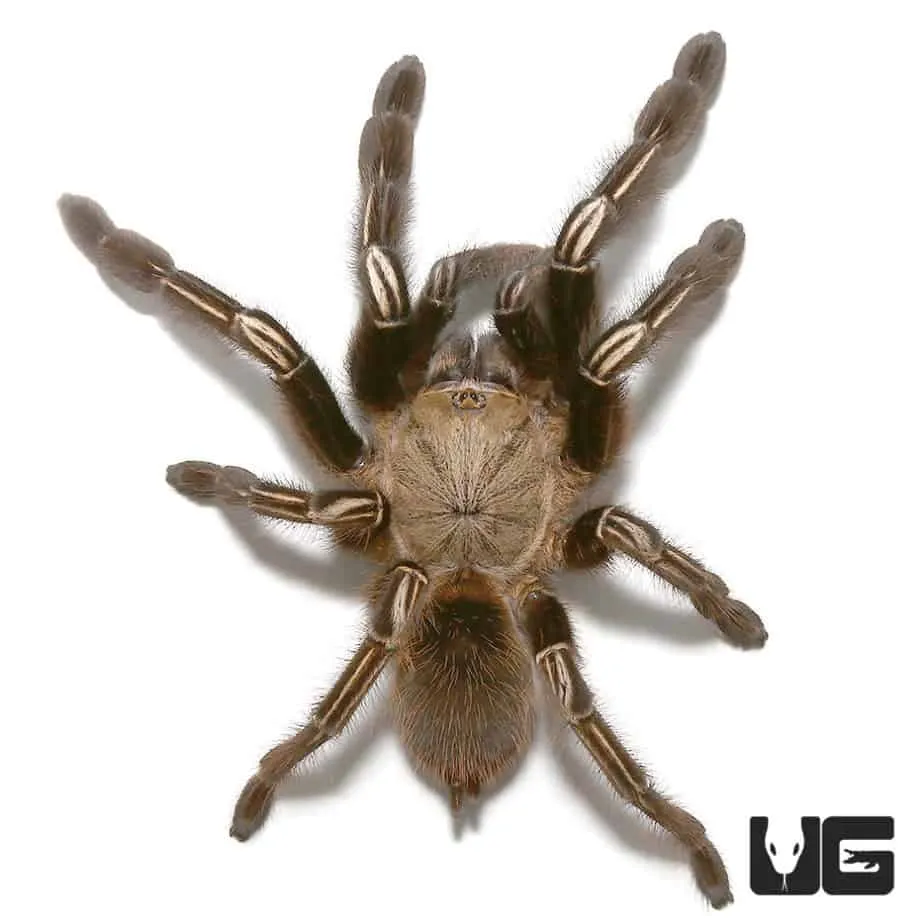Skeleton Tarantula Care Top 5 Tips
Caring for a Skeleton Tarantula (Hapalopus sp.) can be a rewarding experience, but it’s essential to understand their specific needs to ensure they thrive. These spiders, known for their striking black and white patterns, require a specialized environment and consistent care. This guide provides the top 5 essential tips to help you provide the best possible care for your Skeleton Tarantula, from setting up their habitat to understanding their feeding habits and recognizing signs of a healthy tarantula. Proper care not only ensures the tarantula’s well-being but also enhances your enjoyment of this fascinating species. Let’s dive into the key aspects of Skeleton Tarantula care to create a comfortable and enriching environment for your new pet.
Understanding Skeleton Tarantulas (Hapalopus sp.)
Before diving into the specifics of care, it’s crucial to understand the Skeleton Tarantula itself. Hapalopus sp., often referred to as the Skeleton Tarantula, is a relatively small, terrestrial tarantula native to South America. They are known for their unique appearance, featuring contrasting black and white stripes on their legs and carapace, resembling a skeleton. These tarantulas are relatively docile, making them a popular choice for beginner tarantula keepers, although responsible handling is still paramount. Understanding their natural environment helps replicate their ideal habitat in captivity, contributing to their health and longevity. Their size, temperament, and specific needs differentiate them from other tarantula species, making this knowledge essential for their care and maintenance.
Appearance and Characteristics of Skeleton Tarantulas
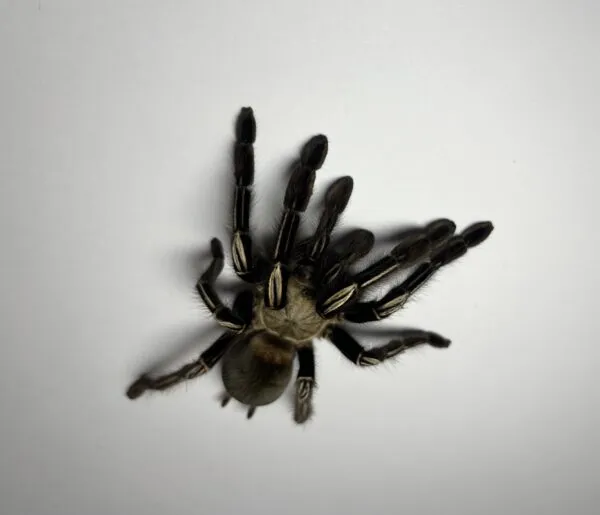
Skeleton Tarantulas are visually striking creatures, instantly recognizable by their distinctive patterns. They typically grow to a leg span of around 2-3 inches, making them a manageable size for enclosure requirements. The black and white striping serves as camouflage in their natural habitats, blending with the forest floor. Their behavior is generally calm, though they can be skittish and prone to fleeing if startled. They are also known for their speed and ability to burrow, especially when they are young. Understanding their appearance and temperament allows keepers to provide suitable housing, which contributes significantly to their well-being. Observing the colors of the tarantulas, especially their abdomen, can also indicate their health and imminent molting, adding to the care taking experience.
Habitat and Enclosure Setup for Skeleton Tarantulas
Setting up the right habitat is fundamental to the health and happiness of your Skeleton Tarantula. The enclosure should mimic their natural environment as closely as possible. This setup includes the correct enclosure size, substrate, decor, temperature, and humidity levels. A well-designed enclosure not only provides a comfortable living space but also allows the tarantula to exhibit natural behaviors, such as burrowing and hunting. Incorrect setups can lead to stress, health issues, and reduced lifespan. Therefore, creating a safe and enriching environment from the start is critical, ensuring your tarantula can thrive. Below are the key factors to keep in mind while setting up the ideal enclosure for your Skeleton Tarantula.
Choosing the Right Enclosure
The size of the enclosure is critical. For juveniles, a small container is appropriate, typically around 5 gallons, but it’s crucial to upgrade the enclosure as the tarantula grows. For adults, a 10-gallon tank or a similar sized enclosure is suitable. The enclosure should have a secure lid to prevent escapes, as Skeleton Tarantulas are fast and can easily slip out. Ventilation is also essential to prevent the buildup of excess humidity and mold growth. The enclosure should be made of clear material, such as glass or acrylic, to allow for easy viewing. Remember, it is always better to have an enclosure that is too big rather than too small. The overall design should focus on safety and ease of maintenance, allowing you to provide the best possible care for your pet.
Substrate and Decor for Your Tarantula

The substrate should be several inches deep to allow for burrowing, which is a natural behavior for Skeleton Tarantulas. A mixture of peat moss, coconut fiber, and a small amount of vermiculite is ideal, as it holds moisture well and allows for burrowing. Avoid substrates that are too dusty or can cause respiratory issues. Decor can be added to the enclosure to enrich the environment. This can include cork bark, artificial plants, and hides to provide security. Ensure that all decor is securely placed to prevent it from falling and potentially harming the tarantula. The substrate should be slightly moist but not saturated, helping to maintain the humidity levels required by the tarantula. A well-chosen substrate and appropriate decor will make your tarantula feel safe and secure, promoting healthy behaviors.
Temperature and Humidity
Skeleton Tarantulas thrive in a temperature range of 75-80°F (24-27°C). A heat lamp or heat mat can be used to maintain this temperature, but make sure to monitor it to prevent overheating. Place the heat source on one side of the enclosure to create a temperature gradient. Humidity should be maintained at 65-75%, which can be achieved by lightly misting the enclosure once or twice a week and ensuring the substrate remains slightly moist. Use a hygrometer to monitor the humidity levels, as fluctuations can be harmful. Proper temperature and humidity are essential to ensure the tarantula’s molting process runs smoothly and to prevent health problems. Regular monitoring and adjustments will create the perfect environment for your Skeleton Tarantula to thrive.
Feeding Your Skeleton Tarantula
Feeding your Skeleton Tarantula is a crucial aspect of their care, and it’s important to understand their dietary needs and feeding habits. These tarantulas are opportunistic predators, meaning they will eat whatever they can catch and subdue. The size of the prey should be appropriate for the size of the tarantula to prevent any potential harm. Providing the right nutrition ensures your tarantula remains healthy and active. Here’s a comprehensive guide to help you feed your Skeleton Tarantula safely and efficiently, promoting its overall well-being. Remember, their feeding habits are relatively simple to manage with a basic understanding.
What to Feed Your Skeleton Tarantula
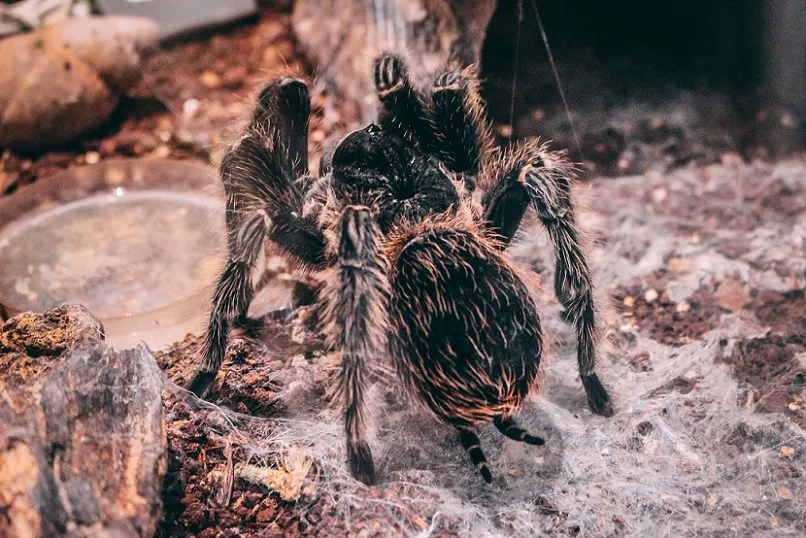
The primary diet of Skeleton Tarantulas consists of insects. Crickets, roaches, mealworms, and superworms are all suitable options. It’s essential to ensure that the insects are gut-loaded before feeding them to your tarantula. Gut-loading involves feeding the insects nutritious food, which is then passed on to your tarantula, providing essential vitamins and minerals. The size of the prey should be roughly the same size as the tarantula’s abdomen. Avoid feeding wild-caught insects due to the risk of parasites or pesticides. Offering a varied diet can also contribute to the overall health and vitality of your Skeleton Tarantula. Always remove any uneaten food after 24 hours to prevent mold growth and maintain a clean enclosure.
Feeding Frequency and Schedule
The frequency of feeding depends on the tarantula’s age. Spiderlings and juveniles should be fed more often, approximately two to three times a week, while adults can be fed once or twice a week. Adjust the feeding schedule based on your tarantula’s appetite and body condition; a healthy tarantula should have a slightly rounded abdomen. Avoid overfeeding, as this can lead to health problems. Monitor your tarantula’s feeding habits, and adjust accordingly, as individual tarantulas have varied appetites. Always provide fresh water, and remove any uneaten prey items from the enclosure to maintain cleanliness.
Water and Hydration
Providing a constant water source is crucial for your Skeleton Tarantula’s health. Use a shallow water dish filled with clean water. Make sure the water dish is shallow enough to prevent the tarantula from drowning. Alternatively, you can provide water by misting the enclosure lightly once or twice a week, ensuring the substrate is slightly moist. Hydration is essential for the tarantula’s molting process and overall well-being. Regularly check the water dish and refill it with fresh water. Do not use tap water unless you have de-chlorinated it. Water is an often-overlooked factor, but it’s essential in ensuring your tarantula lives a long and healthy life.
Handling and Safety Precautions for Skeleton Tarantulas
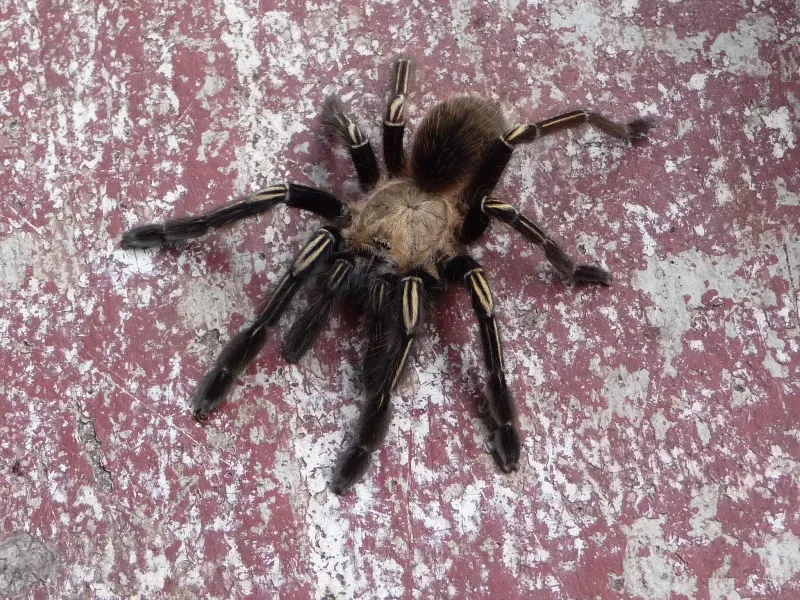
Handling Skeleton Tarantulas should be approached with caution and awareness. These tarantulas are not typically aggressive, but they can bite if they feel threatened or if they are startled. Their venom is not considered medically significant to humans, but the bite can be painful. Proper handling techniques and understanding the potential risks will ensure a safe experience for both you and your tarantula. Always prioritize the well-being of your tarantula by minimizing stress and avoiding unnecessary handling. Handling should only be considered when absolutely necessary, such as during enclosure maintenance.
Risks of Handling
While Skeleton Tarantulas are relatively docile, handling them carries several risks. Tarantulas can become stressed during handling, leading to defensive behaviors. If the tarantula feels threatened, it might flick urticating hairs, which can cause skin irritation. More seriously, they could bite as a last resort. Falls are a significant danger, as a fall from even a small height can be fatal. Avoid handling your tarantula unless it is absolutely necessary. Always handle them close to the ground or over a soft surface to minimize the risk of injury from falls. If you must handle your tarantula, do so slowly and carefully, observing its behavior for signs of stress. Never force your tarantula to do anything.
Signs of a Healthy Skeleton Tarantula
Recognizing the signs of a healthy Skeleton Tarantula is critical for providing proper care and addressing any potential health issues early on. A healthy tarantula will exhibit specific behaviors and physical characteristics. The abdomen should be well-rounded, indicating it has been feeding well. The tarantula should be active and responsive to its environment, not lethargic or sluggish. Its colors should be vibrant and clear, with no discoloration or unusual markings. Watch for signs of proper molting; a healthy tarantula will shed its exoskeleton in one piece. A healthy Skeleton Tarantula should demonstrate a strong appetite and show interest in food, as these signs generally indicate a happy and well-cared-for tarantula.
Common Health Issues and Prevention
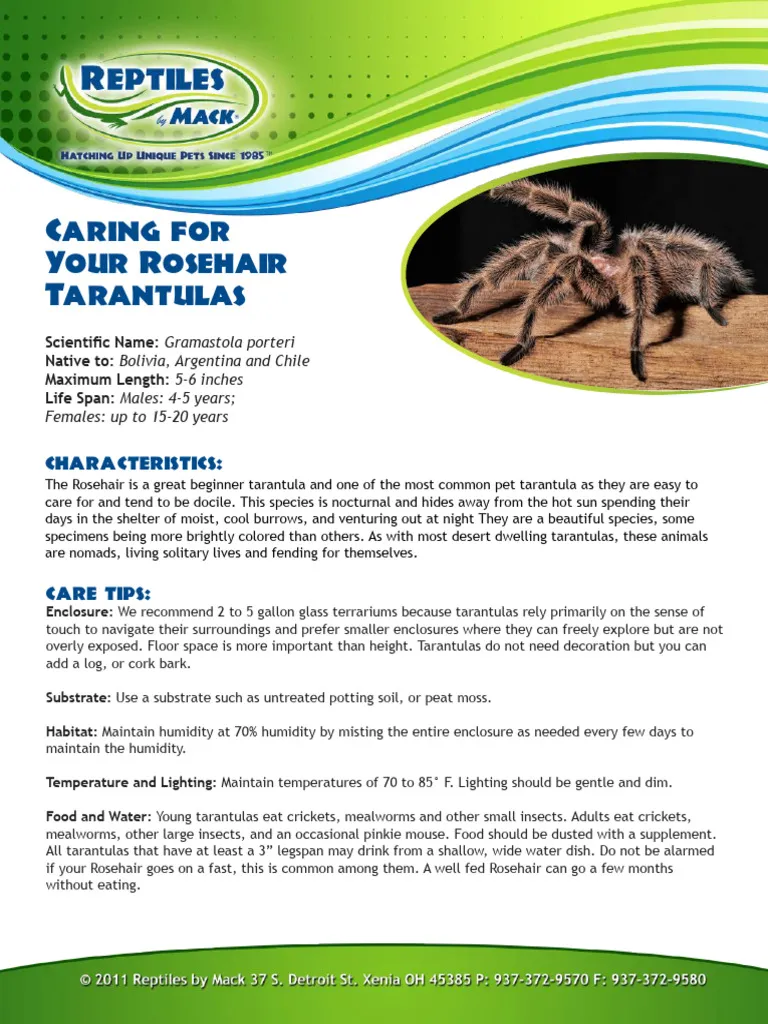
Like all pets, Skeleton Tarantulas are susceptible to certain health issues. Understanding and preventing these problems is essential. Common issues include dehydration, fungal infections, and parasitic infestations. Proper enclosure management, appropriate temperature and humidity levels, and a balanced diet are the best ways to prevent these issues. If you notice any signs of illness, such as lethargy, loss of appetite, or unusual behavior, consult a veterinarian experienced in tarantula care. Keeping a close watch on your tarantula’s behavior and environment will help you take quick action if any problems do occur. Early detection and appropriate treatment will significantly improve your tarantula’s chances of recovery.
Molting Process and What to Expect
Molting is a natural and crucial part of a Skeleton Tarantula’s life cycle. During molting, the tarantula sheds its exoskeleton to grow. The molting process can be stressful for the tarantula, and it’s essential to ensure the correct environmental conditions to support this process. Prior to molting, the tarantula may become less active and may refuse food. It will typically lie on its back. Do not disturb your tarantula during this time, as it is vulnerable. After molting, the new exoskeleton will be soft. Give your tarantula time to harden before feeding. Understanding the molting process will help you to support your tarantula during this sensitive period, ensuring they can grow safely and successfully.
Shedding and Growth of Your Tarantula
The frequency of molting decreases as the tarantula ages. Spiderlings and juveniles molt more frequently than adults. Each molt allows the tarantula to grow and regenerate lost limbs. Provide a safe and stress-free environment during the molting period, maintaining proper humidity levels to prevent the exoskeleton from drying out. After molting, the tarantula will appear brighter and more vibrant. Leave the old exoskeleton in the enclosure until the tarantula is finished hardening, then remove it. Observing the molting process can be a fascinating experience, and knowing what to expect will allow you to provide the best care. Correct care during the molt is crucial for the health and growth of your Skeleton Tarantula.
Conclusion
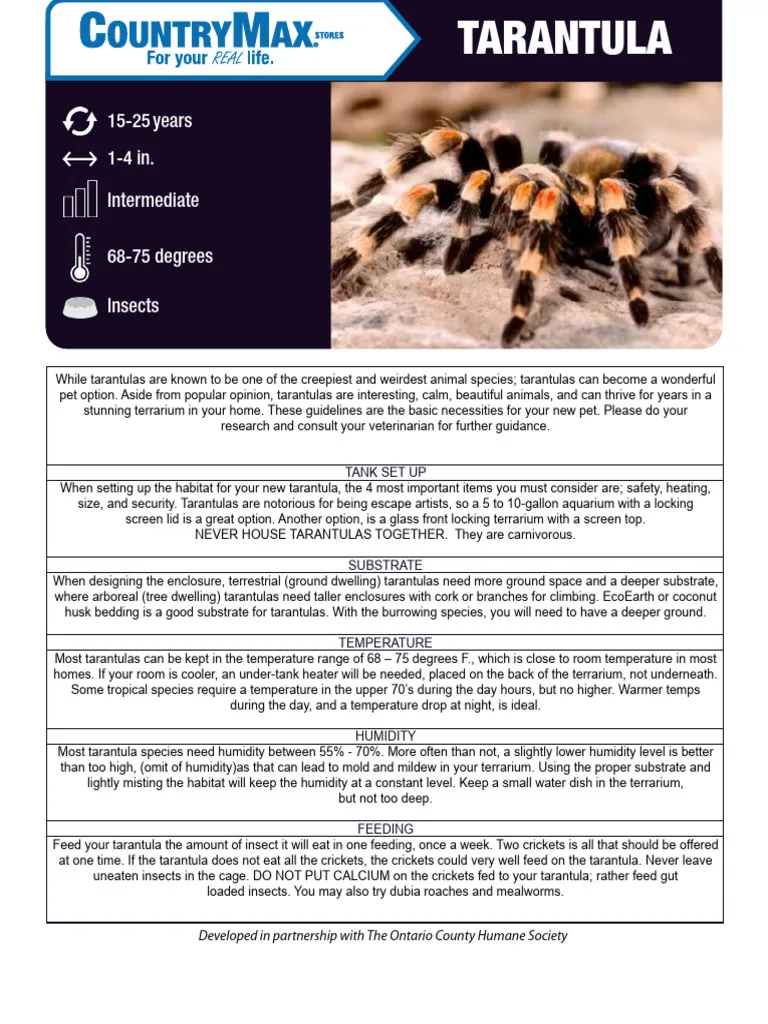
Caring for a Skeleton Tarantula can be a rewarding experience for any arachnid enthusiast. By understanding their specific needs and following the tips outlined in this guide, you can provide a comfortable and enriching environment for your pet. From enclosure setup and feeding to recognizing health issues, each aspect of care plays a vital role in ensuring your tarantula thrives. Remember to stay informed, observe your tarantula’s behavior, and be prepared to adapt your care as needed. With the right knowledge and dedication, you can enjoy the unique beauty and fascinating behaviors of these captivating creatures. Proper care creates a thriving environment for your Skeleton Tarantula, which in turn provides a rewarding pet-keeping experience.
